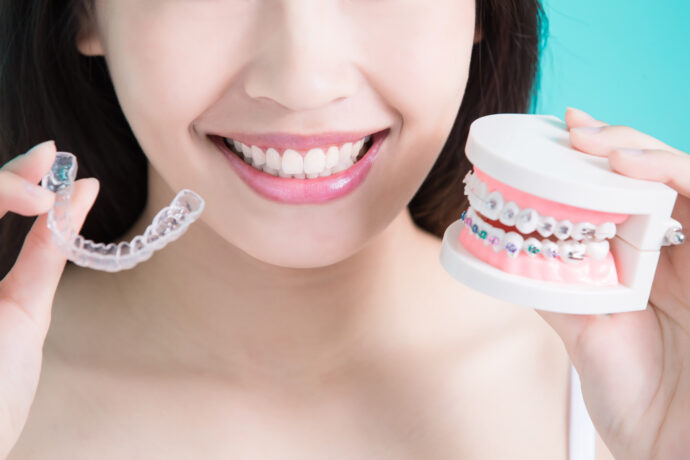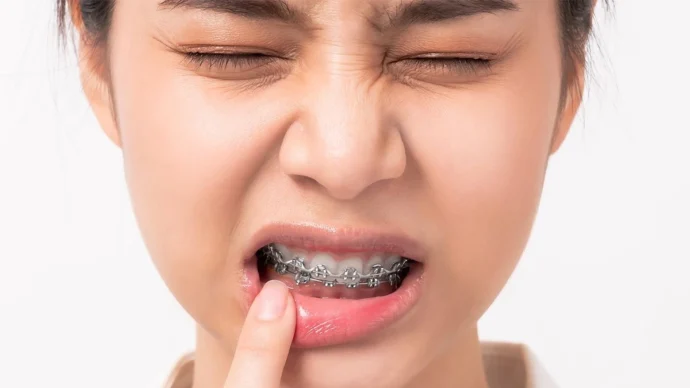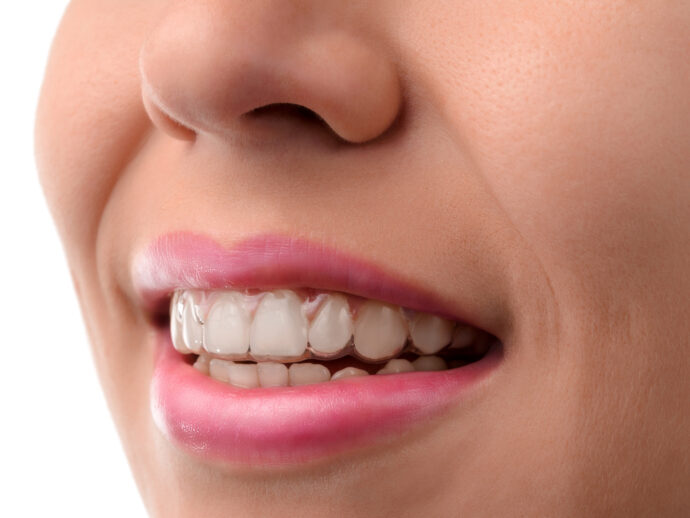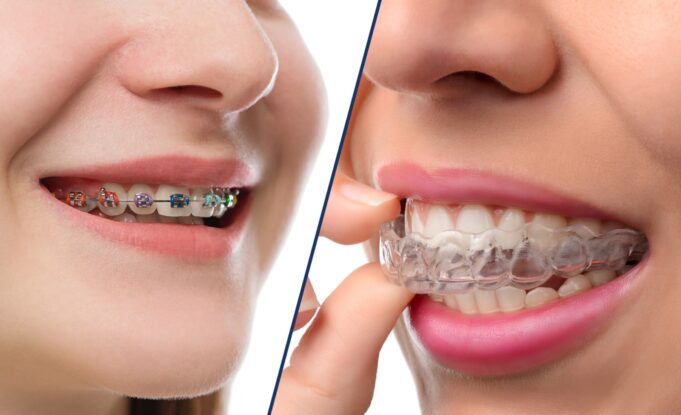Straightening misaligned teeth can improve one’s oral health and appearance, but the process can be accompanied by some discomfort. Invisalign and braces are two popular orthodontic treatments for correcting teeth misalignment, and a common question among patients considering these treatments is whether Invisalign is more painful than braces.
However, orthodontic treatment, whether with Invisalign or braces, requires a commitment to after-care to maintain the desired results.
Patients should follow their orthodontist’s instructions and attend regular check-ups, as well as maintain good oral hygiene practices to ensure a healthy, beautiful smile for years to come.
Differences between Invisalign and Braces

Before comparing the level of pain associated with each treatment, it’s important to understand the differences between Invisalign and braces. Invisalign is a clear plastic aligner that fits snugly over the teeth and gradually moves them into the desired position.
On the other hand, braces are metal or ceramic brackets that are attached to the teeth and connected by wires. The brackets and wires apply continuous pressure to the teeth, gradually moving them into the desired position.
Pain Associated with Invisalign
Invisalign is often considered to be less painful than braces because the plastic aligners put less pressure on the teeth than the brackets and wires of braces. Additionally, the smooth plastic material of the Invisalign aligners is less likely to irritate the inside of the mouth, reducing the risk of painful sores or ulcers.
However, the initial fit of Invisalign aligners can be uncomfortable as the teeth adjust to the pressure of the aligners. This discomfort is usually mild and goes away after a few days.
Pain Associated with Braces

Braces can cause more significant pain when first put on due to the brackets and wires that can irritate the inside of the mouth, causing sores and ulcers. Additionally, the continuous pressure applied by the brackets and wires can cause discomfort for several weeks as the teeth adjust to the pressure.
The type of braces can also impact the level of pain experienced, with traditional metal braces being more painful than ceramic braces, as the metal brackets can be more abrasive and irritate the mouth more easily.
Duration of Pain
In terms of the duration of pain, Invisalign discomfort is typically limited to the initial adjustment period and goes away after a few days. Braces, on the other hand, can cause persistent pain for several weeks as the teeth adjust to the pressure.
Convenience

In terms of the overall treatment process, Invisalign is often considered more convenient than braces. The clear plastic aligners are virtually invisible and can be removed to eat and brush teeth, making it easier to maintain good oral hygiene.
Braces, on the other hand, are more noticeable and can make eating certain foods difficult. Both Invisalign and braces have their own advantages and disadvantages, and the best option for a patient depends on their individual needs and preferences.
While Invisalign is generally considered less painful than braces, the level of pain varies from person to person and can depend on the type of braces chosen. It’s essential to consult with an orthodontist to determine which treatment is best for the patient.
Cost Comparison
When considering orthodontic treatment, the cost is an important factor for many patients. Braces are generally less expensive than Invisalign, but the cost can vary depending on the type of braces chosen and the complexity of the treatment.
On the other hand, Invisalign is a more expensive option due to the cost of the clear plastic aligners and the custom fitting process. However, some insurance plans cover orthodontic treatment, and patients should check with their insurance provider to determine their coverage and the cost of each option.
Treatment Time

The length of treatment time is another factor to consider when choosing between Invisalign and braces. Invisalign treatment typically takes between 12 and 18 months, while braces can take between 18 months and two years. However, the length of treatment time can depend on the complexity of the misalignment and the amount of movement required.
Effectiveness
Both Invisalign and braces are effective orthodontic treatments for correcting misaligned teeth, but the type of misalignment and the desired results will determine which treatment is the best option.
Invisalign is best for mild to moderate misalignment, while braces are better for more complex misalignment and bite issues. It’s essential to consult with an orthodontist to determine which treatment is best for the patient.
Maintenance
Invisalign aligners must be worn for 20 to 22 hours a day to be effective, and they need to be changed every two weeks to continue the teeth-straightening process. Braces, on the other hand, do not require the same level of commitment and do not need to be changed. However, braces do require regular adjustments by the orthodontist to continue the teeth-straightening process.
Orthodontic Retention

Once the teeth have been straightened, it’s essential to maintain their new position to prevent relapse. Both Invisalign and braces patients are usually required to wear a retainer after treatment to ensure the teeth remain in the desired position. The type of retainer will depend on the orthodontic treatment received, but both Invisalign and braces patients will need to wear a retainer to prevent relapse.
Patient Compliance
Invisalign requires a high level of patient compliance to be effective, and the aligners must be worn for 20 to 22 hours a day. Patients must also be diligent about changing their aligners every two weeks and keeping them clean. Braces, on the other hand, do not require as much patient compliance, but the patient must maintain good oral hygiene to avoid decay and gum disease around the brackets and wires.
Final Thoughts

Invisalign and braces are both effective orthodontic treatments for correcting misaligned teeth, and the best option for the patient depends on their individual needs and preferences.
Patients should consult with an orthodontist to determine which treatment is best for them and to understand the costs, treatment time, and level of commitment required for each option. Ultimately, the choice between Invisalign and braces comes down to personal preference, budget, and the desired results.















